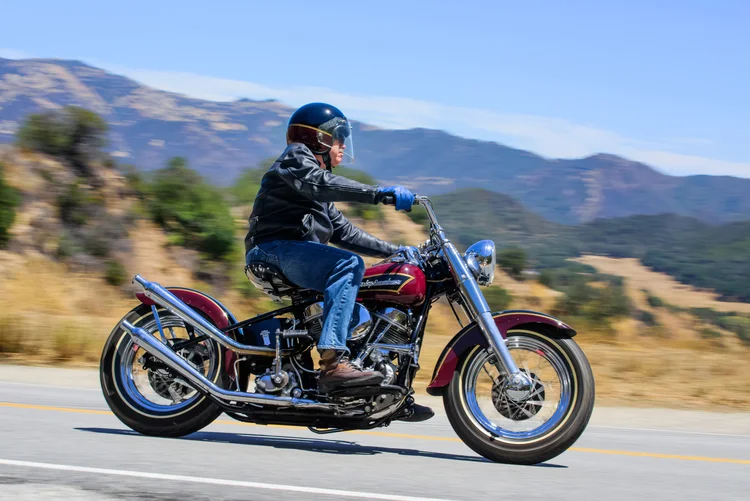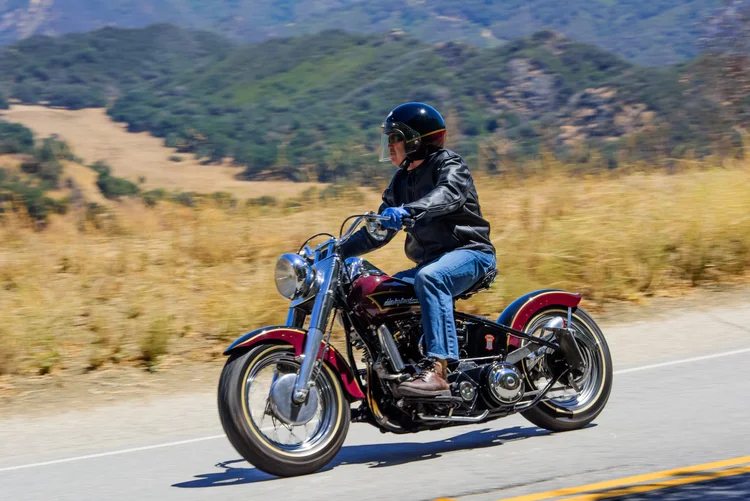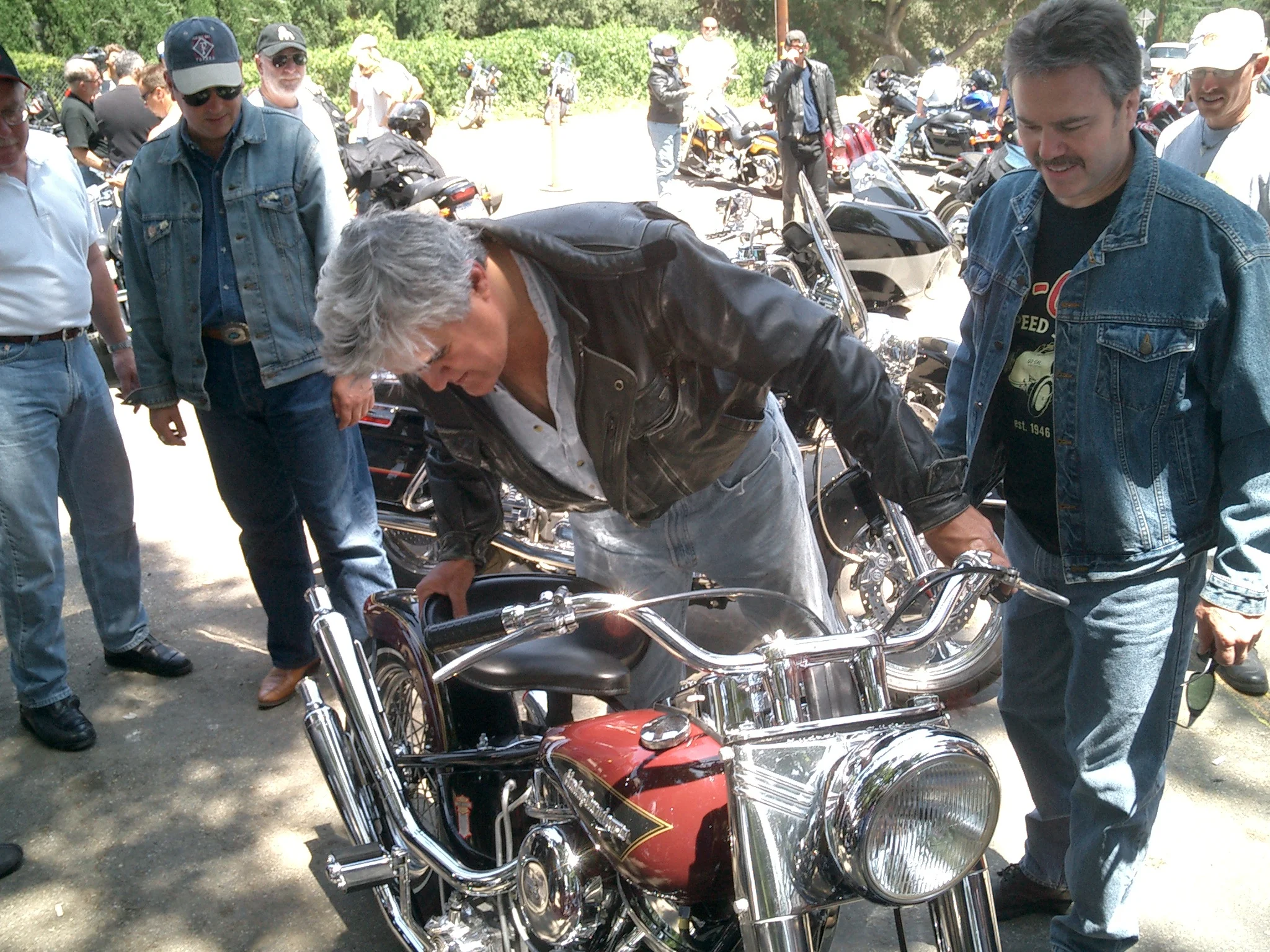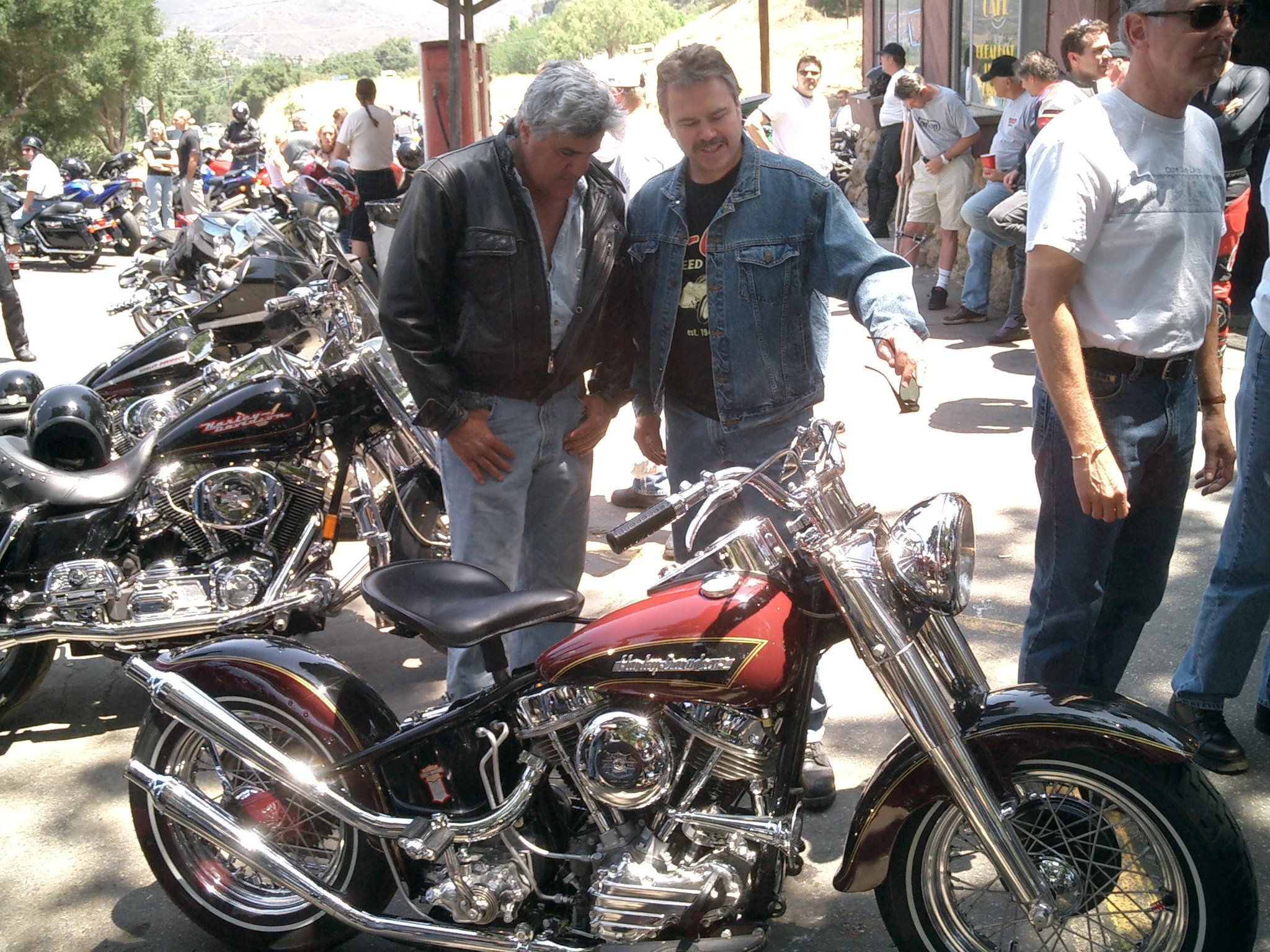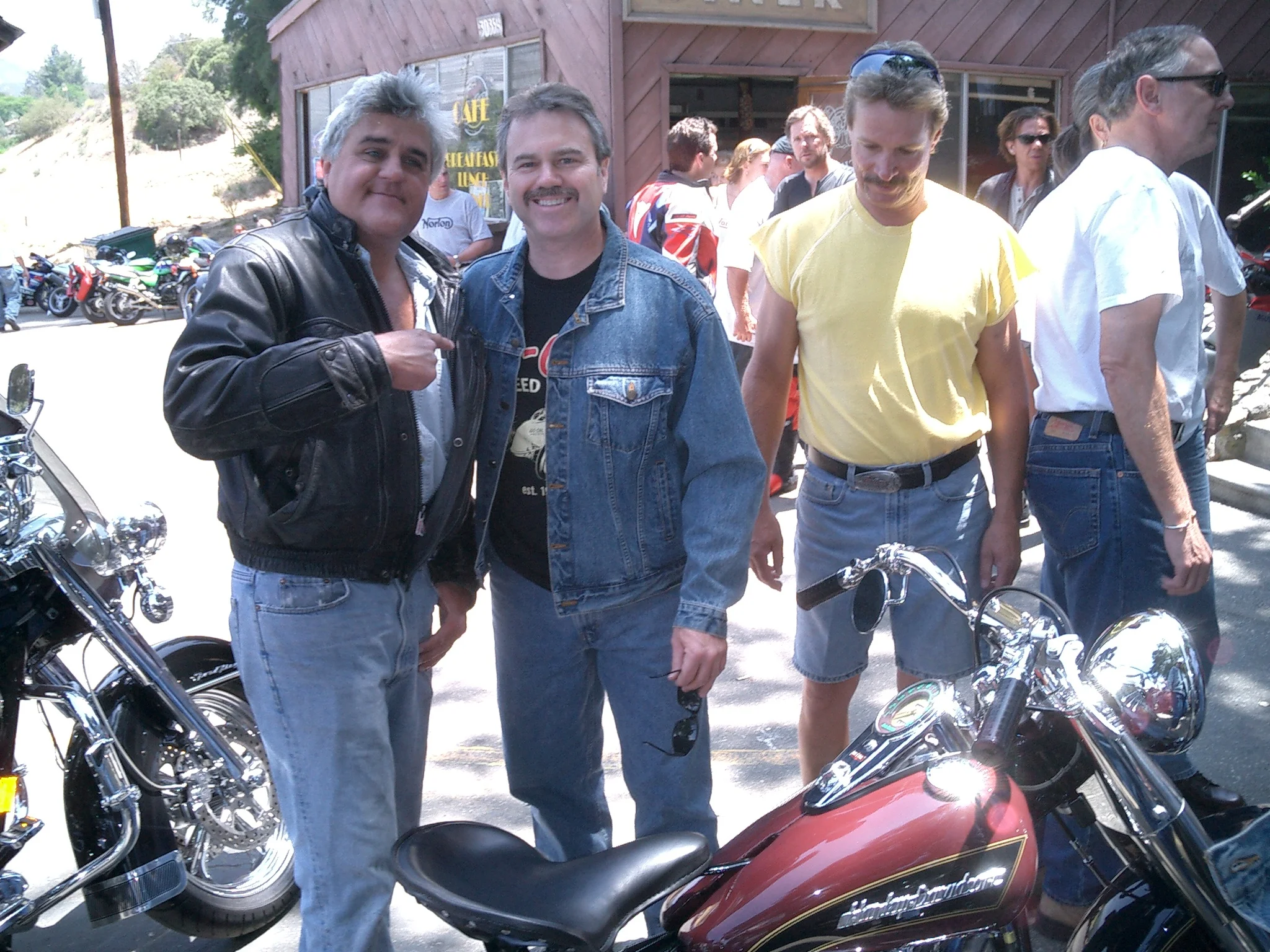Children make their first tentative attempts at standing up and eventually walking in a comfortable environment, surrounded by supportive family members ready to catch them and help them back up to their feet. Children don’t take their first steps attempting to climb Mount Everest. Likewise, initiating oneself to the motorized two wheeled world of motorcycling, no one begins on the most difficult and challenging motorcycles available in order to start the learning process. Therefore, I started to learn on minibikes, then on Honda 90s, working myself eventually up to the Honda 305 dream. That story is available on this website. The point is that you start everything with small safe steps and progress upward until you reach the top of your individual mountain.
For myself, the top of the motorcycle mountain was the huge and brutish and supremely powerful Harley Davidson FLH “Panhead” motorcycle. To pilot such a machine safely down the highways and byways was the ultimate motorcycling accomplishment. If you could handle it you could handle anything motorized on two wheels. This “motorcycle mountain” for me was defined by an experience I had while riding in the back of the family car while still trying to perfect the basic art of walking without falling over. I wrote a story about that experience, along with some of the psychology and even neurobiology to explain it, entitled “Treasure Maps”. Here is that story:
Treasure Maps
My father tells me it must have been 1957 because that was the year Jimmy Brown completely dominated the NFL and we had gone to the game to see him. We must have been coming back from the game, on the Outerbelt Freeway. It was an Indian summer evening, in the uncertainty between day, dusk, and night.
…Emerging from the staccato rhythm of the sportscaster’s recounting the game on the car’s radio came the syncopated hoof beats of unknown horseman. Sitting in the backseat, I strain over the window’s edge to see the horseman.
Then he glides into sight, riding his chrome and light monstrosity, piercing the dusk’s ether with infinite luminosity, studded with stars on his steel steed.
He is supernova amongst the otherwise repetitive stream of non-novel stimuli. Smiling, his obese face is saturated with joy. A woman is languidly leaning against her seat, securely snuggled behind him. She is a modern queen on his royal chariot. Her jacket fringe is flowing in the river of wind that cannot be felt in the metal cocoon of our car.
To my three-year-old brain, this was clearly the most interesting thing on the sensory horizon. In a three-year-old brain, the speed of times’ passage is indirectly proportional to the novelty and significance of new experience. Time slowed enough to burn this image and sound and form into my data banks.
These images now percolate up from the unconscious to influence my passions. These are irrational attractions and distractions from the serious work of my life. A tedious task being completed is transformed into a blast through space in my mind by a boredom saving subconscious.
The child is a child because he is an open vessel to all energies around, within, and through himself. The intellect has yet to progressively filter out greater and greater amounts and kinds of incoming stimuli--all in the name of survival, coping, identity, or ego.
The deficiency of the unfiltered mind (the child-mind) is that it is unaware of time and therefore goes without anticipation of the future. With no nuts saved for the winter, the child dies. “Carpe Diem” is an ineffective survival strategy. The irony is that the child-mind is the doorway to passion, and passion is the energy that fuels each individual’s unique creativity. The adult-mind needs the child-mind to function at its best, yet needs to protect itself from the lack of future awareness and planning.
As a child, I saw the joy and passion and energy of the man and woman on the motorcycle. My parents only saw the inherent unnecessary danger. Motorcycling to the adult-mind is an intrinsically irrational activity.
It is however, performed by and large, by rational people. Why? It is the appreciation that passion is essential for the balanced, complete and creative life-- the notion that passion is a personal treasure. The treasure map must be obtained, the site located and the passion dug up wherever it can be found.
Treasure Maps
It starts with an indiscernible itch, a lack of psychic harmony. It is a realization of needs unfulfilled. In this state of imbalance moments that are open to child-mind occur. Images from the unconscious, smells and sounds from deep centers percolate up into consciousness. The adult-mind recognizes the inherent danger of attending to these intruding ideas, but also the folly of not seeking passion.
So they go to the store to buy their treasure maps. For those passionate about travel or literature it is a magazine on travel or a book on sonnets. For the motor sport enthusiast it is often the specialty magazine that most directly addresses their individual interests. The words and pictures push their buttons in just the right way. But remember, each individual has their own memories, their own windows to child-mind. Ultimately, this is the treasure they seek.
These rational people therefore become unpredictable as to what they will appreciate in a motor journal. They frequently do not follow expert advice or consumer reports recommendations. This is especially true for sports cars and motorcycles.
The critics’ choice is usually not the people’s choice. Those most in the know can’t predict which vehicle will be a sales success or stimulate vehicular passion. If so, these pundits would all have equal success with equally intelligent predictions.
Automotive and motor cycling journalists analyze vehicles with ever newer technology, trying to keep up with the technology of the vehicles themselves. They proclaim their annual vehicles of the year in each category. Frequently these choices have little relationship to sales success. This is explained by the “masses not having the sensibility of the cognoscenti”. They know not what they do. The fact that McDonalds sells the most hamburgers doesn’t make them the “best” hamburgers.
But in the end, neither the vehicular journalist nor the vehicle makers themselves are often not in touch with the very irrational motivation behind most sport vehicle demand: that is passion.
Passion is why Harley-Davidsons, the slowest vehicles measured by the journalist’s stopwatches, out sells by huge factors, the quickest. More vibration and more oil leaks do not translate into reduced demand. This is not rationally explicable. Passion must be put into the equation to comprehend it. I’ve never seen Honda tattooed on anyone. Harley Davidson is second to mother.
Journalists try to measure the unmeasurable by discussing “fun factor” or side bars that apologize for really liking a vehicle despite its relatively poor performance or high price. They have yet to measure the passion that ultimately explains our incomprehensible behaviors.
I ride a motorcycle because it links me with my unfiltered mind, my childhood. It is an irrational activity, unless it is understood as a mechanism of stirring the soul and collecting the passion that vaporize off its surface. Where one places passion on the list of personal priorities is an individual matter. I assume it has to do with whatever balance between adult-mind and child-mind an individual nurtures.
Whenever we need a passion fill-up we always return to the sounds and energies that interacted with our young unfiltered minds to create significant moments. Each individual has his own heritage, a data bank full of such moments. Connect these dots and you create the image of your own passion constellation, your own map leading to the treasures of passion.
For me, one of those stars was a moment in 1957 at the meeting of day and dusk and night. For the adult minds it was an irrational, unsafe, overweight man on a Harley-Davidson who rode by our car. Of course I saw him as he was: An unfiltered passion spirit flowing along his channel of joy on his beam-of-light-steed, connected to his passion, having “unadulterated” fun. Any child could have figured that out.
So 47 years later I had to acquire my own “chrome and light monstrosity” just like the one I had seen when I could barely walk on that warm autumn night some many years before.
Not a penny less… How I acquired my 1954 Harley Davidson F LH
When I turned 49 years of age, I looked down the road and realized that 50 was right around the corner. This put a little more pressure on me to realize my dream of owning a fully restored 1954 FLH Harley Davidson. I was born the year Harley proclaimed its 50th anniversary (despite the fact that its first model was made in 1903!). So I felt it only appropriate that I would own a 50th on my 50th.
After several years of searching for reasonably complete 1954 FLH, I found one that fit all of my criteria for originality and completeness. This particular owner had done a great restoration many years earlier on an all original bike. It had been featured on the cover and as the as the primary story for Supercycle magazine in 1986. When I saw the bike initially I was disappointed in its condition. The seller was asking the top market price (and said his price was FIRM) for a fully restored, show winning Harley Davidson motorcycle. The asking price and his inflated description of the bike had lead me to believe that the bike was in perfect condition.
With the greatest diplomacy, despite his saying the price was firm, I told the seller that $8000 to $10,000 in restoration work was necessary. I felt that the bike was therefore worth approximately $9000 less than his asking price. Knowing that he would never go for this offer, I suggested that he indicate his bottom dollar. At this point, the seller got quite upset that I would have the audacity to offer any less than his asking price – after all he said his price was FIRM. This was, after all, his “baby”. I again tried to explain my position – but to no avail. In fact, he shoved his pointed index finger in my face and said he would never sell his “baby” to me for “even one penny less than his asking price”.
Several months went by moving toward my 50th birthday. The pressure was mounting. I’d yet to even purchase the bike that I was going to restore – let alone get it restored. I decided to visit Paul Wheeler. Paul is a noted West Coast restoration expert and had a beautiful 1954 Harley Davidson police bike. Though I really did not want to police bike, I thought I might have to settle for this particular style. Paul and I chatted on a hot Saturday afternoon about some of the projects he was completing. After showing me some of the work he was doing, I noticed a bike covered under a blanket in the corner of his shop. I asked Paul what was under the blanket and he said “that’s a ’54 FLH that I did about 20 years ago. It’s a great all original bike but needs quite a bit of work to get it back to where it was; it’s been sitting most of the time”. He pulled the blanket off of the motorcycle and lo and behold it was the same 1954 FLH that I had unsuccessfully attempted to purchase from the “not one penny less…” owner.
I asked Paul if he had any idea what the owner wanted for the bike. Paul’s response was exactly $9000 less than the owner’s previous asking price – my exact offer that I had made to the owner! Obviously the owner had come to his senses. But I couldn’t get out of my mind how he pointed that index finger at me and made the proclamation about not selling it for one penny less than his asking price. I felt that if I was the one to make the offer – out of pride, the owner would not sell it to me. Therefore, a good friend of mine called the owner to arrange for the purchase on my behalf. He was going to take my check to the seller so there would be no problem in him recognizing me. At the last second, an urgent matter came up and he could not go to pick up the motorcycle at the appointed time. So it was up to me to do it.
I drove over to his place of business where the motorcycle was being delivered. As I got out of the car and walked toward the owner waiting for me at the door I looked in his eyes for evidence that he recognized me. I was convinced that if he recognized me then he would point that same finger at me and say something like “aren’t you the guy that I told I wasn’t going to sell this motorcycle for less than my asking price a while back? Yes – you are that guy! You know what I’m not going to sell you the motorcycle”!
As I got close to him, I saw subtle evidence of recognition, as though he thought he may have seen me before. I quickly reached out to shake his hand and told him what a beautiful job he had done on the motorcycle. That seemed to take him down “memory lane” as he discussed many of the details of his restoration. He then told me that he had recently dropped the price substantially. He said he realized that he had still been looking at the motorcycle through the lenses of his memory of it on completion and not how it was now. Then, looking me directly in the face and told me how a motorcycle collector had come to buy the bike some months earlier. He told me that he had told the collector that his price was firm but the collector had still made an offer less than the asking price. Then he told me “I guess some guys just don’t know what a firm price means”. I said “yeah, go figure”!
So I handed him the check, we signed the pink slip, and I started to walk out the door. Then he yelled “hey wait a minute”! I turned around fully expecting him to say “you are that collector guy aren’t you”? But instead, he simply said “don’t forget the pink slip – take good care of her”. I shook his hand again and promised him that I would take excellent care of her. Realizing that he had just allowed his emotional attachment to the Harley guide his earlier behavior I no longer wanted to say “you know what, you’re right- you didn’t sell it for one penny less, you sold it for $9000 less”. I simply said thank you and goodbye.
Sure enough many thousands of dollars later my bike completed its restoration. Just before my 50th birthday it was also the FLH’s 50th birthday! Upon its completion I went on a 238 mile ride through the Tehachapi Mountains with some other antique bike riders. The bike did great – mainly because it had all new parts. Despite my parts being 50 years old, I made it to!
For brief moments on that ride I became like the vision of my childhood: An unfiltered passion spirit flowing along his channel of joy on his beam-of-light-steed, connected to his passion, having “unadulterated” fun-a 1954 on a 1954!
